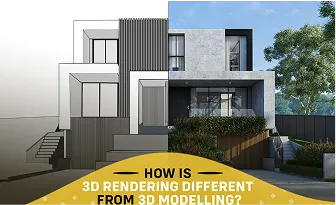3D Modeling & Rendering

Introduction to 3D Modeling & Rendering
3D modeling is the process of creating three-dimensional objects using digital tools. These models are essential for visualizing, testing, and manufacturing products. Rendering, on the other hand, is the process of turning a 3D model into a 2D image or animation, showcasing it with realistic lighting, materials, and textures for presentations or marketing purposes.
3D Modeling Software Tools
Popular 3D modeling software includes Autodesk Maya, Blender, 3ds Max, and SolidWorks. These programs allow for a variety of modeling techniques, including polygonal, NURBS, and parametric modeling. Choosing the right tool depends on the project’s needs, whether for game design, product design, or animation.
Techniques of 3D Modeling
There are different modeling techniques used in 3D creation. Polygonal modeling is commonly used for games and animation, NURBS (Non-Uniform Rational B-Splines) is ideal for smooth, organic shapes, and parametric modeling is used for creating precise, engineering-ready designs. Each technique serves different industries and project goals.
Rendering Process
The rendering process converts 3D models into lifelike images or animations. This involves simulating how light interacts with surfaces, applying textures, and adding realistic environmental elements. Rendering software such as V-Ray, Arnold, or Blender’s Cycles engine is used to achieve photorealistic results for visualizing products before production.
Lighting & Materials in Rendering
Lighting and materials play a crucial role in 3D rendering. Proper lighting sets the mood and emphasizes important aspects of the model. Materials, such as metal, glass, or fabric, are applied to surfaces to define their appearance. Realistic rendering often requires a combination of different lighting techniques and material properties to achieve photo-quality results.
Applications of 3D Modeling & Rendering
3D modeling and rendering are widely used in industries like product design, architecture, gaming, film production, and virtual reality. These technologies allow designers and engineers to visualize their concepts, perform simulations, and create compelling presentations or advertisements. Additionally, rendered visuals help clients understand the final product before it is manufactured.
Benefits of 3D Modeling & Rendering
The benefits of 3D modeling and rendering include faster design iterations, reduced prototyping costs, and improved communication between stakeholders. It allows for a more efficient development process, helping to avoid errors that might occur in traditional methods. The realistic visualizations produced by rendering also make it easier to secure approvals from clients or investors.
Final Output & Deliverables
The final output of a 3D modeling and rendering project can include 3D models in formats such as OBJ, STL, or FBX, as well as rendered images or animations. These deliverables are used for presentations, marketing, or further development. Ensuring the accuracy and realism of the final render is key for its intended use in real-world applications.
